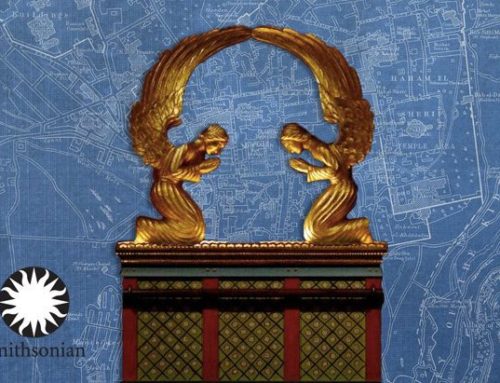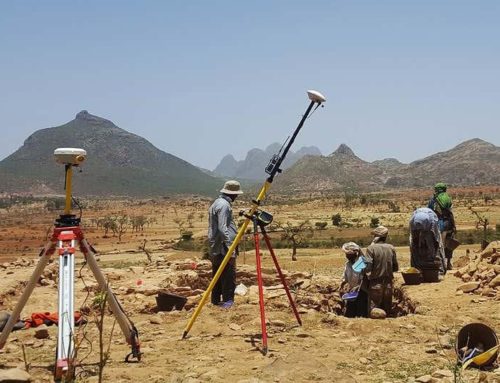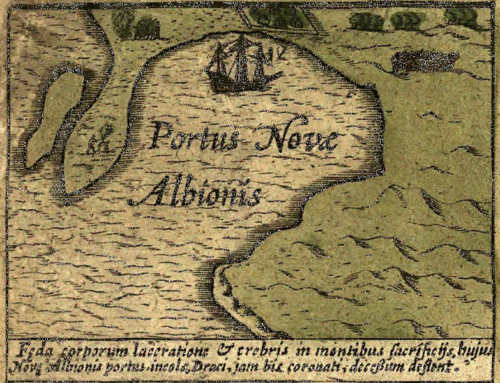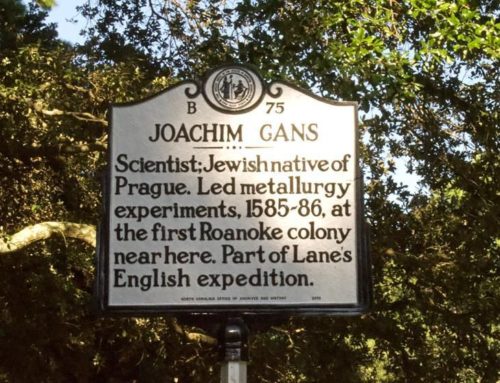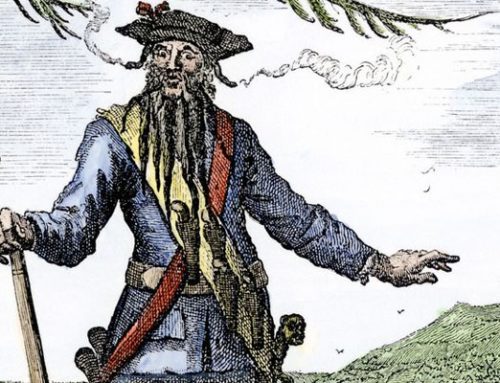An artifact found 20 years ago turns out to not be what archaeologists though.
It seemed too good to be true. And it was.

The lost colony of Roanoke (Science History Images / Alamy Stock Photo)
Nearly 20 years ago, excavators digging on North Carolina’s remote Hatteras Island uncovered a worn ring emblazoned with a prancing lion. A local jeweler declared it gold—but it came to be seen as more than mere buried treasure when a British heraldry expert linked it to the Kendall family involved in the 1580s Roanoke voyages organized by Sir Walter Raleigh during Elizabeth I’s reign.
The 1998 discovery electrified archaeologists and historians. The artifact seemed a rare remnant of the first English attempt to settle the New World that might also shed light on what happened to 115 men, women, and children who settled the coast, only to vanish in what became known as the Lost Colony of Roanoke.
Now it turns out that researchers had it wrong from the start.
A team led by archaeologist Charles Ewen recently subjected the ring to a lab test at East Carolina University. The X-ray fluorescence device, shaped like a cross between a ray gun and a hair dryer, reveals an object’s precise elemental composition without destroying any part of it. Ewen was stunned when he saw the results.
“It’s all brass,” he said. “There’s no gold at all.”

The ring, previously thought to be gold, turns out to be brass. (Charles Ewen/ECU)
North Carolina state conservator Erik Farrell, who conducted the analysis at an ECU facility, found high levels of copper in the ring, along with some zinc and traces of silver, lead, tin and nickel. The ratios, Farrell said, “are typical of brass” from early modern times. He found no evidence that the ring had gilding on its surface, throwing years of speculation and research into serious doubt.
“Everyone wants it to be something that a Lost Colonist dropped in the sand,” added Ewen. He said it is more likely that the ring was a common mass-produced item traded to Native Americans long after the failed settlement attempt.
Not all archaeologists agree, however, and the surprise results are sure to reignite the debate over the fate of the Lost Colony.
The settlers arrived from England in the summer of 1587, led by John White. They rebuilt an outpost on Roanoke Island, 50 miles north of Hatteras, abandoned by a previous band of colonists. White’s group included his daughter Eleanor, who soon gave birth to Virginia Dare, the first child born of English parents in the New World.
White quickly departed for England to gather supplies and additional colonists, but his return was delayed by the outbreak of war with Spain. When he finally managed to land on Roanoke Island three years later, the settlement was deserted. The only clue was the word “Croatoan” carved on a post, the name of a tribe allied with the English and the island now called Hatteras.
ECU archaeologist David Phelps, now deceased, found the ring while excavating a Native American village there and took it to a jeweler named Frank Riddick in nearby Nags Head. Phelps reported that the jeweler tested the ring and determined it was 18-carat gold.
Riddick, who now runs a fishing charter company called Fishy Bizness, recalled recently that he didn’t conduct an acid-scratch test typically used to verify the presence and quality of the precious metal. “Since this wasn’t about buying or selling, we didn’t do that,” he said. “I just told him that I thought it was gold.” Phelps apparently didn’t want to subject the object to potential damage.
A senior member of London’s College of Arms subsequently noted that the seal on the signet ring was of a lion passant, and suggested that it might relate to the Kendall family of Devon and Cornwall. A Master Kendall was part of the first colonization attempt in 1585, while another Kendall visited Croatoan when a fleet led by Sir Francis Drake stopped by in 1586. Though this link was never confirmed, the object was nicknamed the Kendall ring.
Since Phelps thought the ring was made of a precious material and likely belonged to the Elizabethan era, he argued it was an important clue. “That doesn’t mean the Lost Colony was here,” he told a reporter at the dig site after the ring’s discovery. “But this begins to authenticate that.”
Some archaeologists, however, were skeptical of the artifact’s connection to Roanoke, given that it was found with other artifacts dating to between 1670 and 1720—about a century after the Elizabethan voyages. This was also an era in which brass rings showed up at Native American sites up and down the East Coast.
But Mark Horton, an archaeologist at the University of Bristol in the United Kingdom, says that Ewen’s results don’t necessarily preclude that it belonged to a Roanoke colonist. “The fact that the ring is brass actually makes it more similar to other British examples,” he said, noting that the ring could have been made in the 1580s. “I would argue that it was kept as an heirloom, passed down, and then discarded.”
Horton is currently digging at the Hatteras site where the ring was discovered. The excavations, sponsored by the Croatoan Archaeological Society, have so far uncovered several artifacts that may have been made during Elizabethan times, including the handle of a rapier and bits of metal from clothing.
If the Lost Colonists left Roanoke for Croatoan in the late 1580s, argues Horton, they might have brought along their most precious objects. Over a couple of generations they may have assimilated with the Algonquian-speaking Croatoan people and their English heirlooms would have eventually worn out. “Oh, there’s granddad’s old sword in the corner rusting away,” said Horton. “Why are we keeping that?”
His theory is also based on archaeological finds that show that Native Americans on Hatteras manufactured lead shot and used guns to hunt deer and birds by the 1650s. Prior to this, their diet was based heavily on fish and shellfish. The technological sophistication, Horton suggests, hints at the presence of Europeans before the second wave of English arrived in the area in the late 1600s. That, too, could point to the presence of assimilated colonists and their descendants.
That theory is a stretch, says archaeologist Charles Heath, who worked with Phelps and was present when the ring was found. “Such items would have been used, modified, traded, re-traded, lost, discarded or curated by their native owners—and subsequent native owners—for many years,” he argued. In the end, he said, “a stray 16th-century artifact found here and there on the Outer Banks will not make for a Lost Colony found.”
Horton acknowledges that rather than Roanoke colony possessions brought along by assimilating English, the Croatoan people could have acquired the goods from Jamestown, the later Virginia colony to the north, instead. Gunflints, coins, and glass beads found at the site almost certainly came from the newer English settlement. But he is confident that the current excavations will soon reveal additional evidence.
Meanwhile, the hunt for the Lost Colony continues. Another group of archaeologists working about 50 miles west of Roanoke Island at the head of Albemarle Sound say that they have pottery and metal artifacts likely associated with the Lost Colony. The digs by the First Colony Foundation were sparked by the 2012 discovery of a patch concealing the image of a fort on a map painted by John White.
But like the finds at Hatteras, the objects might be associated with the second wave of English settlement.
Last fall, a dig by the National Park Service at Fort Raleigh on Roanoke Island—thought to be the site of the original settlement—yielded no trace of the colonists. But earlier in 2016, archaeologists did find a handful of fragments of an apothecary jar that almost certainly date from the 16th century.
That the gold Kendall ring is likely a cheap brass trade item won’t derail the quest to find out what took place on the Outer Banks more than four centuries ago. As for Ewen, he hopes that the analysis of the ring will help put researchers back on track in their search for scarce clues to the Roanoke settlers. “Science actually does work,” he said—“if you give it time.”
